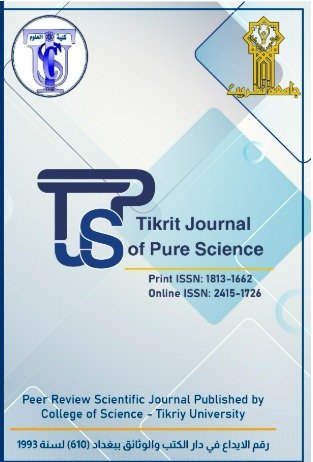The Stability for Limit Cycle of Lomax Autoregressive Model
Main Article Content
Abstract
In this research, we proposed a new non-linear model known as the Lomax autoregressive model, which is based on the cumulative distribution function of the Lomax distribution. Using the local linearization approximation technique, we found stability for the proposed first-order model's limit cycle. Then, we generalized the conditions for the Lomax autoregressive model of order p and found stability for the limit cycle of period (q > 1). Some examples illustrate the state of stability, and we plot the trajectory for the model of different initial values.
Article Details

This work is licensed under a Creative Commons Attribution 4.0 International License.
Tikrit Journal of Pure Science is licensed under the Creative Commons Attribution 4.0 International License, which allows users to copy, create extracts, abstracts, and new works from the article, alter and revise the article, and make commercial use of the article (including reuse and/or resale of the article by commercial entities), provided the user gives appropriate credit (with a link to the formal publication through the relevant DOI), provides a link to the license, indicates if changes were made, and the licensor is not represented as endorsing the use made of the work. The authors hold the copyright for their published work on the Tikrit J. Pure Sci. website, while Tikrit J. Pure Sci. is responsible for appreciate citation of their work, which is released under CC-BY-4.0, enabling the unrestricted use, distribution, and reproduction of an article in any medium, provided that the original work is properly cited.
References
1. Ozaki T, Oda H. Non-linear time series model identification by Akaike's information criterion. IFAC Proceedings Volumes. 1977;10(12):83-91. https://doi.org/10.1016/S1474-6670(17)66563-7
2. Ozaki T. The statistical analysis of perturbed limit cycle processes using nonlinear time series models. Journal of Time Series Analysis.1982;3(1):29-41. https://doi.org/10.1111/j.1467-9892.1982.tb00328.x
3. Mohammad AA, Ghannam A. Stability of Cauchy autoregressive model. Journal of pure and applied science, Salahaddin University, Hawler (Special Issue), pp (52-62). 2010.
4. Salim A, Youns AS. A Study of the Stability of a Non-Linear Autoregressive Models. Australian J Basic Appl Sci. 2012;6(13):159-66.
5. Khalaf ZS, Mohammad AA. On stability conditions of Burr X autoregressive model. Tikrit Journal of Pure Science. 2019;24(5):91-6.
6. Mohammad AA, Mudhir AA. Dynamical approach in studying stability condition of exponential (GARCH) models. journal of king saud university-science. 2020;32(1):272-8.
7. Abdullah HH, Mohammad AA. Stability Study of Exponential Double Autoregressive model with application. NeuroQuantology. 2022;20(6):4812.
8. Ali NE, Mohammad AA. Stability conditions of limit cycle for Gompertz Autoregressive model. Tikrit Journal of Pure Science. 2023;28(2). https://doi.org/10.25130/tjps.v28i2.1348
9. Salim AJ, Ebrahem KI. studying the stability by using local linearization method. International Journal of Engineering Technology and Natural Sciences. 2020;2(1):27-31. https://doi.org/10.46923/ijets.v2i1.57
10. Hameed KF, Alazawey NSK. Stability Study of SATER Models in a Dynamic Approach with Application. Mathematical Statistician and Engineering Applications. 2023;72(1):773-90.
11. Youns AS, Ahmad SM. Stability Conditions for a Nonlinear Time Series Model. International Journal of Mathematics and Mathematical Sciences. 2023;2023(1):5575771. https://doi.org/10.1155/2023/5575771
12. Bassim WB, Salem AJ, Ali AH. A new analytical study of prey–predator dynamical systems involving the effects of Hide-and-Escape and predation skill augmentation. Results in Control and Optimization. 2024;16:100449. https://doi.org/10.1016/j.rico.2024.100449
13. Lomax KS. Business failures: Another example of the analysis of failure data. Journal of the American statistical association. 1954;49(268):847-52. https://doi.org/10.1080/01621459.1954.10501239
14. Kleiber C, Kotz S. Statistical size distributions in economics and actuarial sciences: John Wiley & Sons; 2003. http://dx.doi.org/10.1002/0471457175
